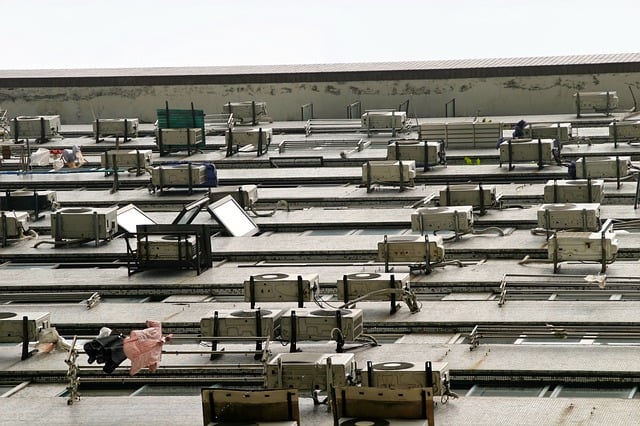What You Need To Know About Variable Refrigerant Flow (VRF) Systems

A Comprehensive GUide to Variable Refrigerant Flow (VRF) Systems
Functions:Heating and Cooling
VRF systems use refrigerant as the heat-carrying medium instead of water, as implied by their name. A pump is controlled by a variable-speed drive to adjust the flow of refrigerant, depending on current load. These systems are easy to install once contractors get familiarized with them, while also providing flexible operation and a remarkable energy efficiency. Another advantage of VRF systems is their modular design, which makes them a great option for projects that will be built in stages.
The most basic version of a VRF system uses an outside condenser unit that can be used for either heating or cooling. There are two refrigerant lines, one for supply and one for return, and they are shared by various indoor fan-coils. Although this basic VRF configuration does not allow simultaneous heating and cooling for different building areas, there are two ways in which the system can be modified to accomplish this.
Two-Pipe System
When VRF systems only use only one supply line and one return line, it is possible to deploy a branch controller for simultaneous heating and cooling of different building areas. The branch controller is installed between the condenser unit and the piping network delivering refrigerant to the indoor fan-coil units.
- Areas that require cooling are supplied with refrigerant in liquid form (subcooled), and areas that require heating are supplied with refrigerant in gas form (superheated).
- Basically, the heat extracted from cooled areas is delivered to heated areas, and the condenser only provides the output difference required to balance heating and cooling.
- Two-pipe VRF systems with a branch controller are recommended when the capacity will be expanded in the future. Since the controller provides hub to which all indoor units connect, there is no need to modify existing refrigerant lines during an expansion.
Simultaneous heating and cooling are only possible in a two-pipe system if a branch controller is deployed. Alternatively, a three-pipe system can be used for buildings with simultaneous heating and cooling needs.
Three-Pipe System
This VRF system configuration uses three lines connected to the condenser unit: one for heating, one for cooling and a common return line. The basic operating principle of a three-pipe VRF system is the following:
- Instead of using a branch controller to deliver either liquid or gaseous refrigerant, this function is built into the outdoor condenser unit.
- The three lines (liquid, gas and return) are connected to all indoor fan-coils, and each unit is equipped with a branch selector that switches the supply depending on the specified operating mode - heating or cooling.
- The return is common for all fan-coils, regardless of their operating mode.
A three-pipe system generally provides a higher heat recovery efficiency than a two-pipe system with a branch controller, but the system provides reduced flexibility for future expansions - the existing refrigerant lines must be modified to add more fan-coils.
Make sure your mechanical installations are code compliant and energy efficient, while getting a 50% faster turnaround. You can contact Nearby EngineersNew York Engineers by email (info@ny-engineers.com) or phone (786) 788-0295212-575-5300.

Anuj Srivastava
Anuj Srivastava is a principal partner at NY Engineers. He is known for his MEP franchise market knowledge. Anuj is currently leading a team of 100+ MEP/FP engineers and has successfully led over 1500 franchise projects in the US.
Join 15,000+ Fellow Architects and Contractors
Get expert engineering tips straight to your inbox. Subscribe to the NY Engineers Blog below.


